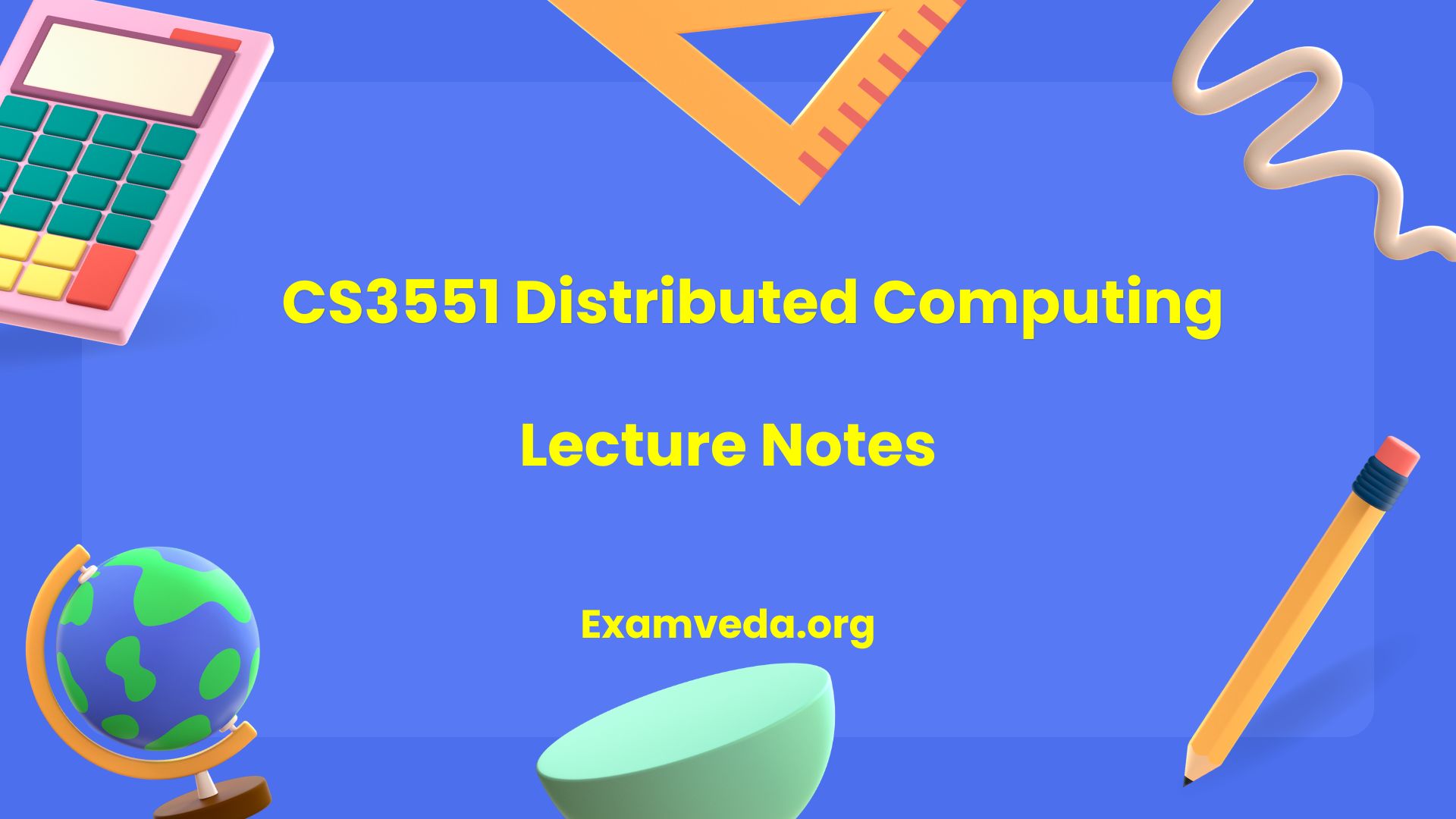CS3551 Distributed Computing Notes
Download CS3551 Distributed Computing Books, Lecture Notes, Part-A 2 marks with answers, Part-B 16 marks Questions, PDF Books. In this Notes Very Useful for Third Year Fifth Semester Students.
“CS3551 Distributed Computing Books”
“CS3551 Distributed Computing Lecture Notes”
“CS3551 Distributed Computing Study Material”
“CS3551 Distributed Computing Notes”
Subject Info:
| Semester | Fifth Semester |
| Department | CSE |
| Year | Third Year |
| Regulation | R 2021 |
| Subject Code / Name | CS3551 Distributed Computing |
| Content | Local Authors Books, Lecture Notes |
Syllabus:
CS3551 Distributed Computing
UNIT I INTRODUCTION
Introduction: Definition-Relation to Computer System Components – Motivation – Message -Passing Systems versus Shared Memory Systems – Primitives for Distributed Communication – Synchronous versus Asynchronous Executions – Design Issues and Challenges; A Model of Distributed Computations: A Distributed Program – A Model of Distributed Executions – Models of Communication Networks – Global State of a Distributed System.
UNIT II LOGICAL TIME AND GLOBAL STATE
Logical Time: Physical Clock Synchronization: NTP – A Framework for a System of Logical Clocks – Scalar Time – Vector Time; Message Ordering and Group Communication: Message Ordering Paradigms – Asynchronous Execution with Synchronous Communication – Synchronous Program Order on Asynchronous System – Group Communication – Causal Order – Total Order; Global State and Snapshot Recording Algorithms: Introduction – System Model and Definitions – Snapshot Algorithms for FIFO Channels.
UNIT III DISTRIBUTED MUTEX AND DEADLOCK
Distributed Mutual exclusion Algorithms: Introduction – Preliminaries – Lamport’s algorithm – RicartAgrawala’s Algorithm –– Token Based Algorithms – Suzuki-Kasami’s Broadcast Algorithm; Deadlock Detection in Distributed Systems: Introduction – System Model – Preliminaries – Models of Deadlocks – Chandy-Misra-Haas Algorithm for the AND model and OR Model.
UNIT IV CONSENSUS AND RECOVERY
Consensus and Agreement Algorithms: Problem Definition – Overview of Results – Agreement in a Failure-Free System(Synchronous and Asynchronous) – Agreement in Synchronous Systems with Failures; Checkpointing and Rollback Recovery: Introduction – Background and Definitions – Issues in Failure Recovery – Checkpoint-based Recovery – Coordinated Checkpointing Algorithm – – Algorithm for Asynchronous Checkpointing and Recovery
UNIT V CLOUD COMPUTING
Definition of Cloud Computing – Characteristics of Cloud – Cloud Deployment Models – Cloud Service Models – Driving Factors and Challenges of Cloud – Virtualization – Load Balancing – Scalability and Elasticity – Replication – Monitoring – Cloud Services and Platforms: Compute Services – Storage Services – Application Services
CS3551 Distributed Computing Lecture Notes
CS3551 Lecture Notes Collection 01 – DOWNLOAD
CS3551 Lecture Notes Collection 02 – DOWNLOAD
CS3551 Lecture Notes Collection 03 – DOWNLOAD
CS3551 Lecture Notes Collection 04 – DOWNLOAD
CS3551 Distributed Computing Important Questions
UNIT I INTRODUCTION
- PASSING S/M VS SHARED memory s/m**
- Model of distributed computations, global state
- Designing issue, challenges and example of ds**
UNIT II LOGICAL TIME AND GLOBAL STATE
- CO (casual order) full topic**
- Message ordering paradigms
- Snapshot algorithms for FIFO channels**
UNIT III DISTRIBUTED MUTEX AND DEADLOCK
- Ricart- Agrawala algorithm, Maekawa‘s algorithm
- Lamport‘s algorithm
- Knapp‘s classification
UNIT IV CONSENSUS AND RECOVERY
- Issues in failure recovery, Checkpoint-based recovery
- Algorithm for asynchronous checkpointing and recovery
- Log-based rollback recovery
UNIT V CLOUD COMPUTING
- Characteristics of CC deployment models**
- Virtualization, motoring and cloud service platform
- Rare storage, app services
CS3551 Distributed Computing Question Papers
CS3551 Distributed Computing QP NOV 2023 – DOWNLOAD
CS3551 Distributed Computing QP APR 2024 – DOWNLOAD
